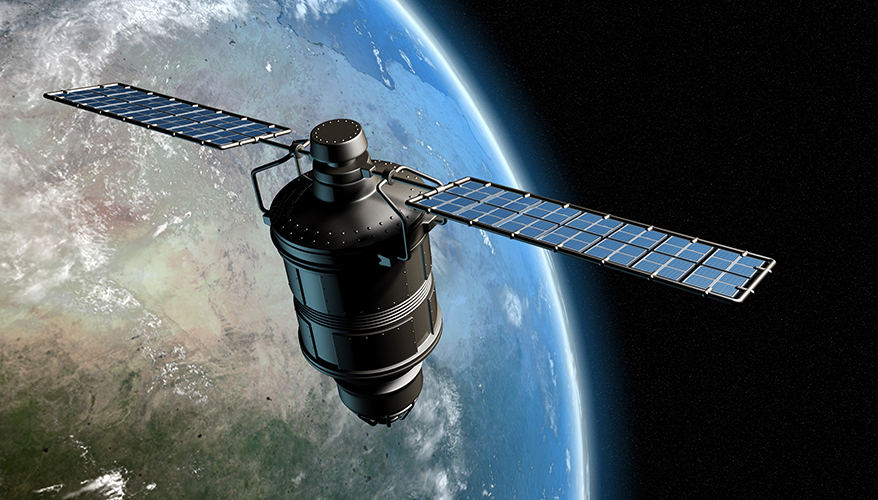Josh Luckenbaugh

The Government Accountability Office has called on the Defense Department and the intelligence community to vastly improve its practices in the acquisition of commercial satellite imagery.
The GAO’s Sept. 7 report, “National Security Space: Actions Needed to Better Use Commercial Satellite Imagery and Analytics,” was conducted to assess the Defense Department and intelligence community’s capability to utilize commercial satellite imagery for national security issues.
Space has seen a major proliferation of commercial satellites over the last few decades. The GAO report cited an Aerospace Corp. study which found “the total number of satellites in space increased from 801 in 2005 to 2,990 in 2020,” and in the United States alone “the commercial sector owned approximately 200 satellites in 2005 and nearly 1,200 by 2020.”
The report said that the Defense Department has recognized the importance of working with commercial satellite providers to help address national security concerns. However, the GAO found that the Defense Department has not done enough to clearly define who is responsible for acquiring this satellite imagery.
“The National Reconnaissance Office … is the central acquirer of commercial satellite imagery for IC and DoD components; however, multiple DoD organizations have acquired commercial imagery over recent years,” the report said. “There is no guidance that addresses organizational roles and responsibilities across the IC and DoD for these acquisitions.”
This lack of clarity will result in unnecessary overlap of commercial imagery acquisition within the intelligence community and Defense Department, the report added.
The Defense Department is also limited in its ability to integrate emerging commercial satellite capabilities quickly and efficiently into its national security plans. “Although they have explored utilizing emerging capabilities, the IC and DoD have not developed an effective approach to bring these capabilities into geospatial-intelligence … operations,” the report said.
The report said that the National Reconnaissance Office has lacked “sustained funding” to explore emerging capabilities.
“NRO had awarded five study contracts as of July 2021 but to date has transitioned only one commercial vendor from a study contract to an operational support contract,” the report said. “According to two of the five commercial vendors that had study contracts, the small dollar amount of this contract type limits the ability of vendors to expand and enhance service offerings.”
Additionally, the National Geospatial-Intelligence Agency “does not have formal requirements to ingest and process this commercial radar data in their ground systems from these emerging capabilities,” the report said.
“NGA can use commercial radar data to a limited degree, but the agency has no sustainable capability or means to scale up the use of this satellite radar data at the enterprise level,” the report added.
While the Defense Department has stated its desire to maximize the use of commercial satellite imagery, there are currently no “specific performance goals and measures” in place to evaluate the United States’ progress in this regard, the report said.
Missing out on opportunities to leverage commercial satellite imagery for defense purposes could see the United States risk losing its advantage in space to foreign competitors like China, the report added.
“Until the IC and DOD adopt an effective and unified approach to pursue emerging capabilities and hold themselves directly accountable for maximizing the contribution of commercial satellite capabilities, the U.S. risks losing ground to emerging competitors in the space domain as well as the ability to deliver technological advantages to the warfighter,” the report said in conclusion.
The GAO gave the Defense Department and Office of National Intelligence four recommendations, “including clarifying roles for commercial satellite imagery, assessing approaches to emerging capabilities, and developing performance goals and measures,” the report said.
Specifically, the GAO called for the Defense Department to conduct a “broad assessment” and update its guidance to ensure everyone knows their role in acquiring commercial satellite imagery.
The Defense Department “concurred with the recommendations,” according to the GAO, and said that it will revise its “directives for NRO and NGA to capture decisions related to the roles and responsibilities associated with commercial imagery acquisition.”
The Office of National Intelligence did not confirm whether it agreed with the GAO’s recommendations, and “instead noted its concerns that the findings, conclusions, and recommendations … are missing important aspects of the IC’s efforts in this matter,” the report said.
“We continue to believe that ODNI should ensure that NGA and NRO develop specific performance goals and measures that would support progress toward the goal of maximizing the use of commercial satellite imagery,” the GAO said in the report.
No comments:
Post a Comment